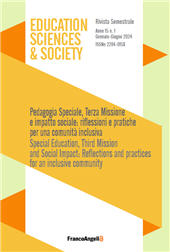Profiles of students in STEM across Latin America and Europe
260-278 p.
The gender gap in Science, Technology, Engineering and Mathematics is a problem that affects higher education institutions across the globe. Although some exceptions exist, such as Algeria, Benin, Oman or Myanmar (according to the Global Gender Gap Report 2022), women represent around 15% of STEM programs. The low number of women in these areas impacts the development of societies. STEM areas are crucial to solve society's problems and improving people's lives. However, half of the population (the females) is not represented in the teams that work to approach those problems. This work aims to analyse the profiles of current and past students from STEM programs in Latin American and European higher education institutions. We collected information about their motivations and concerns when they chose to enter university. We statistically analysed the differences finding that there are some significant ones.
They mostly confirm the literature, showing that males and females have different views and approaches in the STEM field. Females look more for social aspects, while males tend to prioritise career perspectives. The findings suggest that there can be a mutual exchange of good practices between Latin American and European attraction campaigns thanks to the similarity found. [Publisher's Text].
Is part of
Education Sciences & Society : 1,2024-
Articles from the same issue (available individually)
-
Information
ISSN: 2038-9442
KEYWORDS
- STEM, gender gap, higher education institutions, undergraduate students, graduate students


